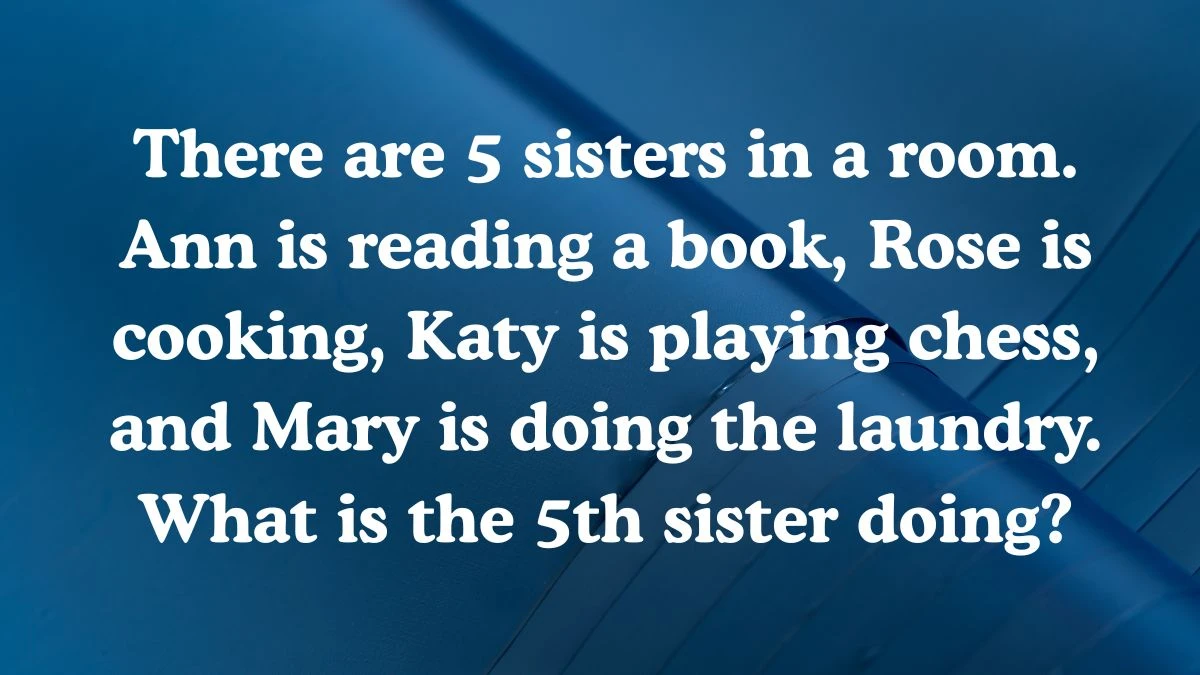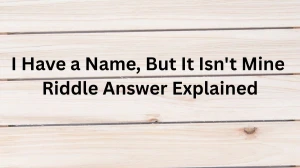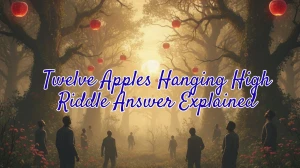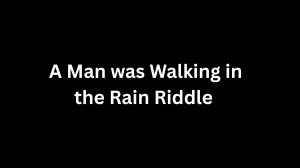There are 5 Sisters in a Room Riddle
There are 5 sisters in a room. Ann is reading a book, Rose is cooking, Katy is playing chess, and Mary is doing the laundry. What is the 5th sister doing?
This seemingly simple question has puzzled countless people, making it one of the most popular brain teasers shared across social media platforms, classrooms, and family gatherings. At first glance, it appears straightforward, but the answer requires a moment of critical thinking that many miss.
There are 5 Sisters in a Room Riddle Answer Revealed
The answer is that the 5th sister is playing chess with Katy.
Why? Because chess is a two-player game. When the riddle states that "Katy is playing chess," it implies she must be playing with someone.
Since there are only 5 sisters in the room, and we've accounted for Ann (reading), Rose (cooking), and Mary (doing laundry), the only person available to be Katy's chess partner is the unnamed 5th sister.
Why This Riddle Works So Well?
The Power of Assumption
This riddle succeeds because it exploits our tendency to make assumptions. Most people assume that each sister is engaged in a solitary activity and begin wondering what unique task the 5th sister might be performing. They often guess activities like sleeping, watching TV, or cleaning.
Logical Deduction
The riddle rewards careful logical thinking. It requires you to consider the nature of each activity mentioned and recognize that chess, unlike the other activities listed, inherently requires two participants.
Misdirection Through Simplicity
The riddle's genius lies in its apparent simplicity. It presents information in a way that seems complete, leading solvers to overthink the problem when the answer is actually embedded within the given information.
Variations and Similar Puzzles
The "5 sisters" riddle belongs to a family of logic puzzles that use similar principles. Other examples include:
- Room puzzles where multiple people are engaged in activities
- Riddles about games that require partners
- Logic problems that hide information in plain sight
The Social Aspect
What makes this riddle particularly engaging is its social element. It's often shared as a challenge between friends, posted on social media with "Can you solve this?" captions, or used by teachers to demonstrate logical reasoning.
The moment of realization when someone "gets it" is often accompanied by that satisfying "aha!" feeling that makes brain teasers so appealing.






